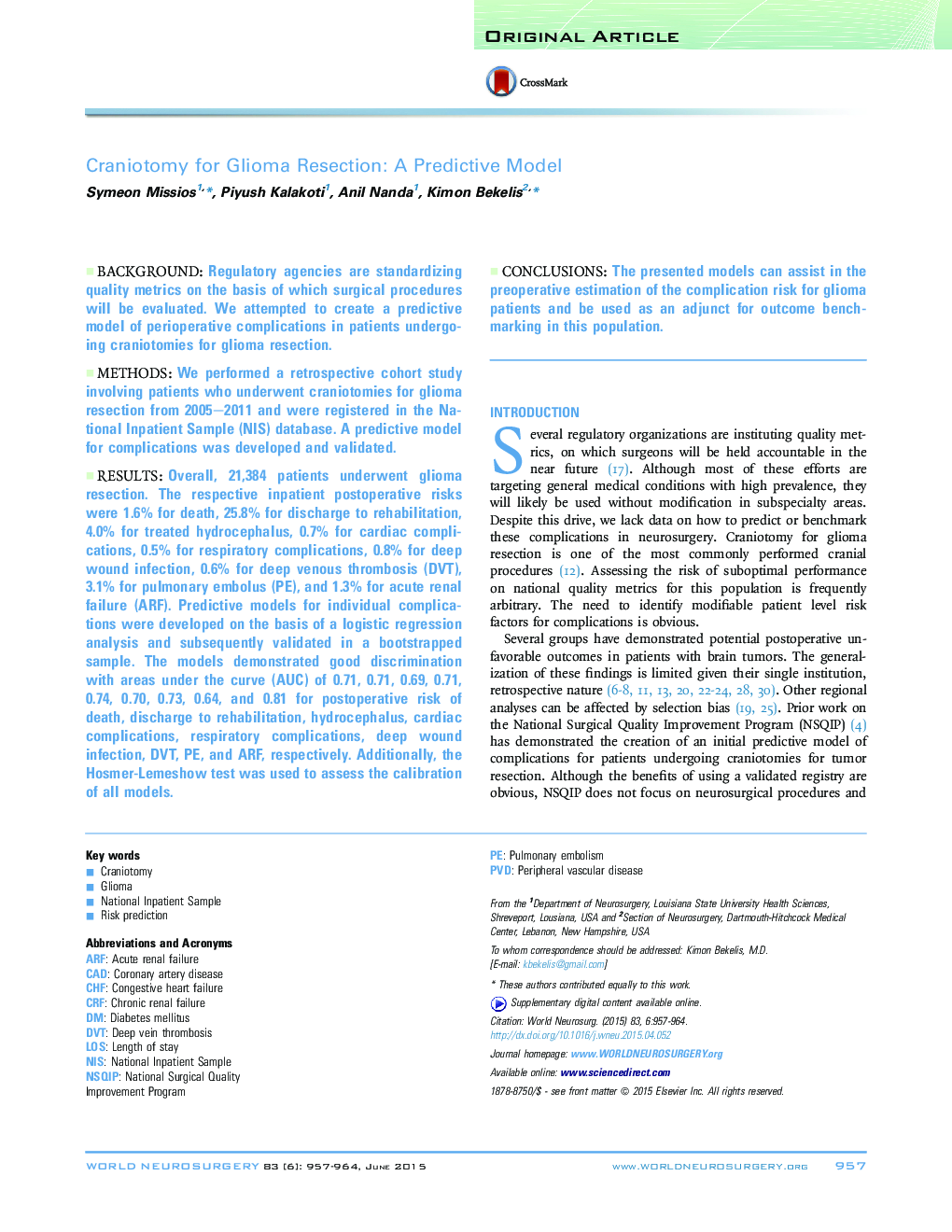| Article ID | Journal | Published Year | Pages | File Type |
|---|---|---|---|---|
| 6045192 | World Neurosurgery | 2015 | 8 Pages |
BackgroundRegulatory agencies are standardizing quality metrics on the basis of which surgical procedures will be evaluated. We attempted to create a predictive model of perioperative complications in patients undergoing craniotomies for glioma resection.MethodsWe performed a retrospective cohort study involving patients who underwent craniotomies for glioma resection from 2005-2011 and were registered in the National Inpatient Sample (NIS) database. A predictive model for complications was developed and validated.ResultsOverall, 21,384 patients underwent glioma resection. The respective inpatient postoperative risks were 1.6% for death, 25.8% for discharge to rehabilitation, 4.0% for treated hydrocephalus, 0.7% for cardiac complications, 0.5% for respiratory complications, 0.8% for deep wound infection, 0.6% for deep venous thrombosis (DVT), 3.1% for pulmonary embolus (PE), and 1.3% for acute renal failure (ARF). Predictive models for individual complications were developed on the basis of a logistic regression analysis and subsequently validated in a bootstrapped sample. The models demonstrated good discrimination with areas under the curve (AUC) of 0.71, 0.71, 0.69, 0.71, 0.74, 0.70, 0.73, 0.64, and 0.81 for postoperative risk of death, discharge to rehabilitation, hydrocephalus, cardiac complications, respiratory complications, deep wound infection, DVT, PE, and ARF, respectively. Additionally, the Hosmer-Lemeshow test was used to assess the calibration of all models.ConclusionsThe presented models can assist in the preoperative estimation of the complication risk for glioma patients and be used as an adjunct for outcome benchmarking in this population.
